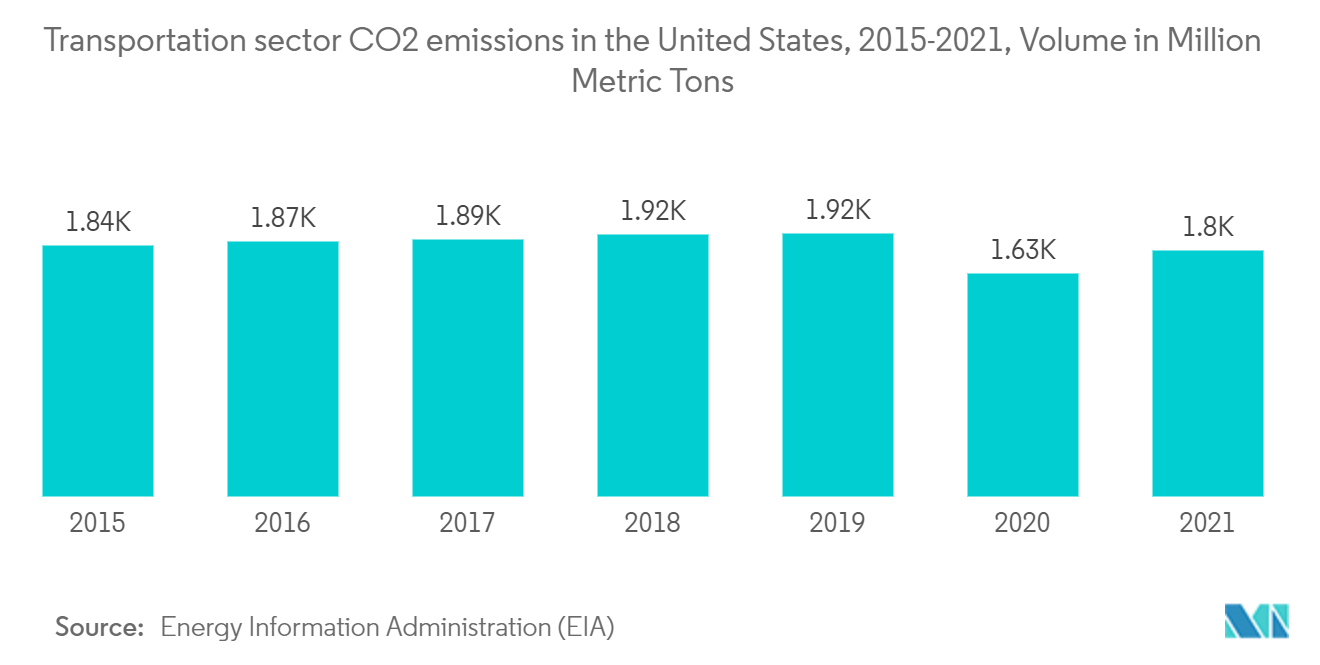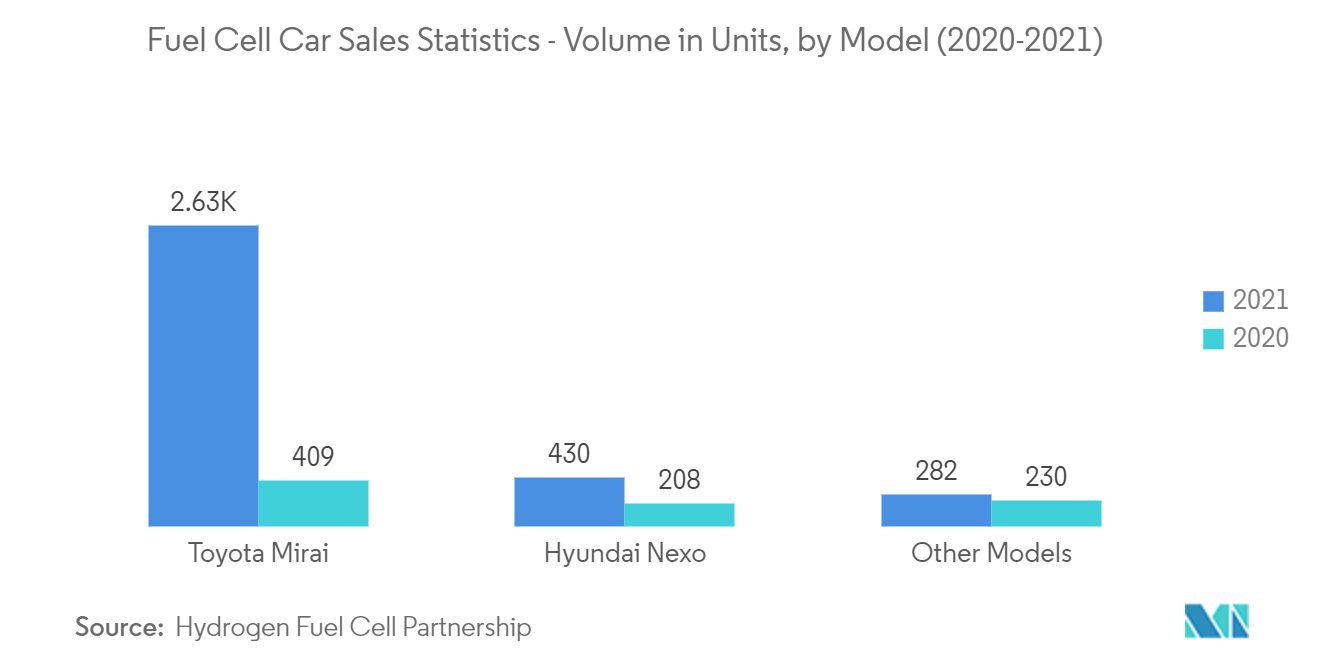Market Trends of Analysis of Fuel Cell Electric Vehicles in North America
This section covers the major market trends shaping the North America Fuel Cell Electric Vehicles Market according to our research experts:
Shifting Government and Consumer Stance to Provide Momentum
Sustainable transportation, which is often considered the low and zero-emission, energy-efficient, and affordable modes of transport, includes alternative-fuel vehicles such as electric and fuel cells.
The benefits of sustainable transportation in the United States have evolved as a critical factor that might take up a long-term vision by the government. The cost savings on fuel and vehicles has been identified as the key factors to resonate strong demand for these low and zero-emission vehicles. Further, the rise in the adoption of alternative fuel production would invite more employment, ultimately creating jobs with an increased vehicle and battery manufacturing and fuel production.
Government actions have also promoted equivalently to propel the demand for fuel cell technology. For instance, in March 2022, Hexagon Purus was selected by New Flyer as a partner for the hydrogen bus market in North America. The company was selected as a partner for the second year in a row by North America. The company will provide high-pressure hydrogen storage cylinders under the terms of this supply agreement for New Flyer's zero-emission Xcelsior CHARGE H2TM hydrogen fuel cell electric transit buses.
Further, vehicles for sustainable mobility use clean fuel technology, batteries, or both. In addition, the flexible-fuel and dual-fuel vehicles, and vehicles equipped with cutting-edge technologies like fuel cells and hybrid power systems, run on alternative fuels to aid fuel conservation and emissions reduction.
A shift in customer preference toward electric vehicles is an evident sign of future decarbonization and is crucial for the future of charging stations. However, the penetration of EVs is subject to various attributes, including consumer behavior, infrastructure, and certain regional clusters. An increase in electric vehicle sales would proportionally fuel the demand for recharging stations. Prominent players in the market have identified consumer demand and have started focusing on catering to it by offering fast-charging technologies across the country.
Thus, due to the above-mentioned factors, demand for fuel cell vehicles is expected to increase over the coming years.

United States to Register Significant Momentum
Using hydrogen as a fuel has many challenges, including supply, high cost of fuel cell electric vehicles (FCEVs), and infrastructure requirements. Regional governments have addressed this concern by deploying public transport like buses and garbage trucks to gain a certain extinct of customer belief and widen the refueling infrastructure.
Fuel cell vehicles penetrated the US market with 3,341 units of FCEV sold in the United States during 2021 compared to 937 units in 2020, marking a 257% solid Y-O-Y growth rate. This growth in sales was led by key automakers, including Toyota and Hyundai.
In addition, Toyota Mirai alone made 2,629 sales in the United States, with 427% Y-o-Y growth from 499 unit sales in 2020. Similarly, Hyundai Nexo registered 430 units of sales with Y-o-Y growth of 107% from 208 units in 2020. Other models registered a Y-o-Y growth of 23%, with 282 units sold in 2021. Moreover, Toyota Mirai holds the largest market share for fuel cell vehicles in the United States, with a nearly 79% market share.
Further, the government seeks active participation in revamping the charging infrastructure network for fuel cell vehicles across the United States in order to keep the mission prospering. Further, manufacturers are investing in fuel cell technology and announcing their latest lineup. For instance,
- In November 2022, HVS (Hydrogen Vehicle System) announced its plan to launch 40 tons of heavy-duty vehicles made of the hydrogen fuel power train to resonate strong potential for green emission missions.
- In May 2022, Daimler Buses announced that it aims to offer CO2-neutral vehicles locally based on batteries and hydrogen in every segment by 2030, initially focusing on Europe and America. Daimler Buses will not invest in Euro VII technology, instead focusing on both battery-electric and hydrogen-based technologies, in line with the dual-track strategy of its parent company Daimler Truck.
Thus, owing to the demand for green transportation and the government's stance, demand for these vehicles is expected to remain positive during the forecast period.

